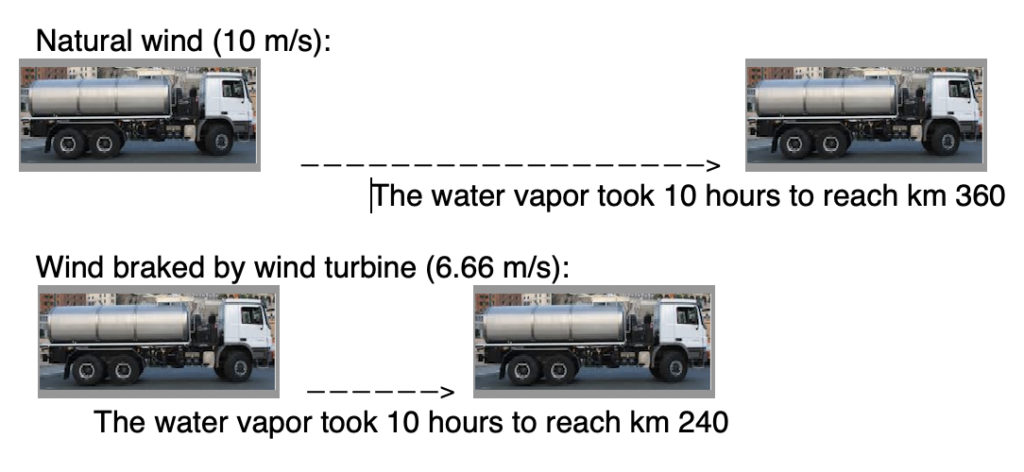Original in french: Eoliennes géantes en grandes quantités: double calamité climatique
Giant wind turbines have two physical effects on their environment, downstream, so commonplace that they have gone unnoticed; these are side effects, which have become calamitous with the increasing numbers of giant wind turbines all over the Earth. Meteorologists will be well advised to simulate these effects with their tools.
The case is of extreme importance, these secondary effects having been attributed to the greenhouse effect of CO2 (and other greenhouse gases, such as methane CH4) and annoyingly confused with global warming.
Background: Wind turbine calculations can be done with laminar winds of 10 m/s (36 km/h) and the best known efficiency is a little better than 50% of its energy drawn, which reduces the wind speed to about two-thirds of its initial speed. Coming out of the wind turbines, everything is preserved (pressure, temperature, volume, humidity), except the energy (reduced), the speed (reduced), and of course the diameter of the flow stream is increased.

Source: Wikipedia, Betz’s law
History and calculations: Eoliennes – promesses de sécheresses en Suisse 5.5.2021
Cold War, organized with giant wind turbines 17.8.2022
1. Regional global warming. If you circulate a wind of 36 km/h on a landscape in the sun, km after km it will heat by simple conduction with the ground; this can be seen with a thermometer placed at a great distance, at solar noon from the place (simple and inexpensive verification). If you place giant wind farms and re-measure downstream with the wind reduced to 24 km/h, you will find that the air will be warmer than before: conduction had 33% more time to take place, the ground has transmitted more heat to the air received at a distance: there will be systematically air atmosphere heating in good weather, in summer aggravated heat waves.

2. Chronic drought. By repeating the experience of having a wind of 36 km/h, reduced by wind farms to 24 km/h, the delivery of water vapor will arrive later. To see this phenomenon, it will suffice to replace the thermometer with a dehumidifier and to operate it for an agreed time, for example from 11:00 a.m. to 1:00 p.m. (solar time of the place). We will then see that the quantity of water collected will be less than the quantity collected in the same duration with the wind of 36 km/h: at the end of the year, we will have less precipitations, alias chronic drought…

The transport of water by the wind is symbolized here by drinking water tankers.
André Bovay-Rohr, Colombier-sur-Morges, 14. September 2022, rev. 16.9.2022
